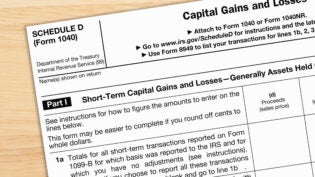2016 Tax Guide Part 3: Personal & Business Tax Credits
By: 1800Accountant

Tax credits are an excellent option for reducing your actual tax bill, as opposed to reducing your taxable income through a tax deduction. There are IRS tax credits for both individual taxpayers and those who earn self-employment income through a small business or contract work.
In Part 3 of our 2016 Tax Guide, consider claiming these personal and business tax credits when filing your tax return:
Personal Tax Credits
1. Earned Income Tax Credit
The Earned Income Tax Credit (EITC) is a federal tax credit that earners of low to moderate incomes may be able to claim when filing their taxes. Earned income is considered income that a taxpayer makes from an outside source – such as an employer – or through a small business or farm.
The EITC can significantly benefit taxpayers who have qualifying children because there is no age restriction for these individuals to claim the credit. Tax filers who do not have a qualifying child must be between 25 and 64 years old to qualify. The only tax-filing status the credit does not cover is for taxpayers who are married and file separately.
Adjusted gross income (AGI), earned income, and investment income are all factored into the eligibility of the EITC.
For tax year 2015, the maximum value of the credit is up to $6,242 for working parents with 3 or more children. Parents of one child are eligible for up to $3,359, while individuals with no children can claim up to $503.
2. American Opportunity Tax Credit
The American Opportunity Tax Credit is an education tax break that can be applied to the expenses incurred during the first 4 years of which students seek higher education.
A student can be an individual, an individual’s spouse, or a dependent.
The value of the American Opportunity Tax Credit is up to $2,500 per qualifying student, and this amount can be claimed each year for the first 4 years of a student’s higher education pursuits. It must be applied to certain education costs, and you can’t claim it if you’re already claiming another education tax credit.
Eligible course materials covered by the credit include textbooks, supplemental materials, school supplies, and other relevant items, along with student activity fees some schools require for enrollment.
The tax break is available to individual taxpayers with annual modified adjusted gross incomes of up to $80,000 and $160,000 for couples who file a joint return. It is phased out for those who have higher incomes. Also, remember that 40% of this tax credit is refundable.
3. Lifetime Learning Credit
Another education tax break is the Lifetime Learning Credit. Its intention is to reduce a tax bill on a dollar-for-dollar basis for a percentage of higher education tuition, fees, and other necessary materials. You may claim the tax credit for yourself, your spouse, or for a dependent to attend school. It does not cover activity or athletic fees, school-provided insurance, or room-and-board costs.
The value of the Lifetime Learning Credit is 20% of the first $10,000 an individual spends on coursework at a post-secondary school. As such, the maximum value of the Lifetime Learning Credit is $2,000 per household on a per-taxpayer basis.
For eligibility, a student should be enrolled in school on a part-time or full-time basis. Plus, the credit is gradually phased out after a taxpayers modified adjusted gross income exceeds $55,000 and is completely phased out when this amount exceeds $65,000. For joint filers, these limits are $110,000 and $130,000, respectively.
4. Child and Dependent Care Credit
The Child and Dependent Tax Care Credit can help offset babysitting and daycare expenses for parents, which are certainly not always cheap.
Eligible taxpayers include individuals who pay for childcare costs for kids under age 13 so that they can either maintain employment or look for a job. The tax break is also available for those who take care of a spouse or dependent of any age who cannot function with self-care.
The credit can be claimed by all taxpayers other than married couples who file separately. It provides a maximum of 35 percent of qualifying childcare expenses, and this amount depends on adjusted gross income.
5. Savers Tax Credit
Formerly known as the Retirement Savings Contributions Credit, the Saver’s Tax Credit applies to eligible contributions to specific retirement plans, including a 401(k) and some investment retirement accounts.
The maximum value of the Saver’s Credit is $1,000 for single filers and $2,000 for joint filers. For tax year 2015, the maximum income limit for the credit is $30,500 for single tax filers, $45,750 for head-of-household filers, and $61,000 for joint filers. The credit is only available to filers over age 18 who were not full-time students or claimed as dependents during the tax year for which the credit is being claimed.
Business Tax Credits
1. Work Opportunity Tax Credit
The Work Opportunity Tax Credit provides businesses with a credit on their taxes of up to 40% of the initial $6,000 in first-year salaries or wages paid to a new employee in the business. An employee must be part of what the IRS terms a targeted group, which includes military veterans and disabled workers.
This tax credit is available to the employer once an employee has worked in a business for at least 120 hours or 90 workdays.
2. Disabled Access Credit
The Disabled Access Credit is another tax incentive for businesses to hire workers with disabilities. The credit covers expenses incurred to provide an adequate work environment to any employees with disabilities.
Eligible employers include those that earned $1 million or less or employed no more than 30 full-time workers in the previous year. The tax credit may be claimed each and every year in which disabled access expenditures are incurred. Keep in mind that this credit is not refundable.
3. Employer-Provided Childcare Tax Credit
The Employer-Provided Child Care Tax Credit is available to employers who have an agreement with a separate childcare facility for such a place to provide childcare services to a company’s employees.
Any employer payments to employees as a childcare reimbursement do not qualify under this credit.
The credit is worth 25% of all childcare expenses incurred by an employer. The maximum credit amount is $150,000.
4. Tax Credit for Increasing Research Activities
If your business partakes in any type of new research or development of products, services, or processes, you may be able to claim a tax credit for certain research expenses your enterprise incurs.
Any activities designed to eliminate technical uncertainty typically qualify as research and experimentation for this tax credit. Such research should strive to improve a process or reduce costs to qualify. This credit is often more applicable in industries like engineering, biology, medicine, and computer science.












